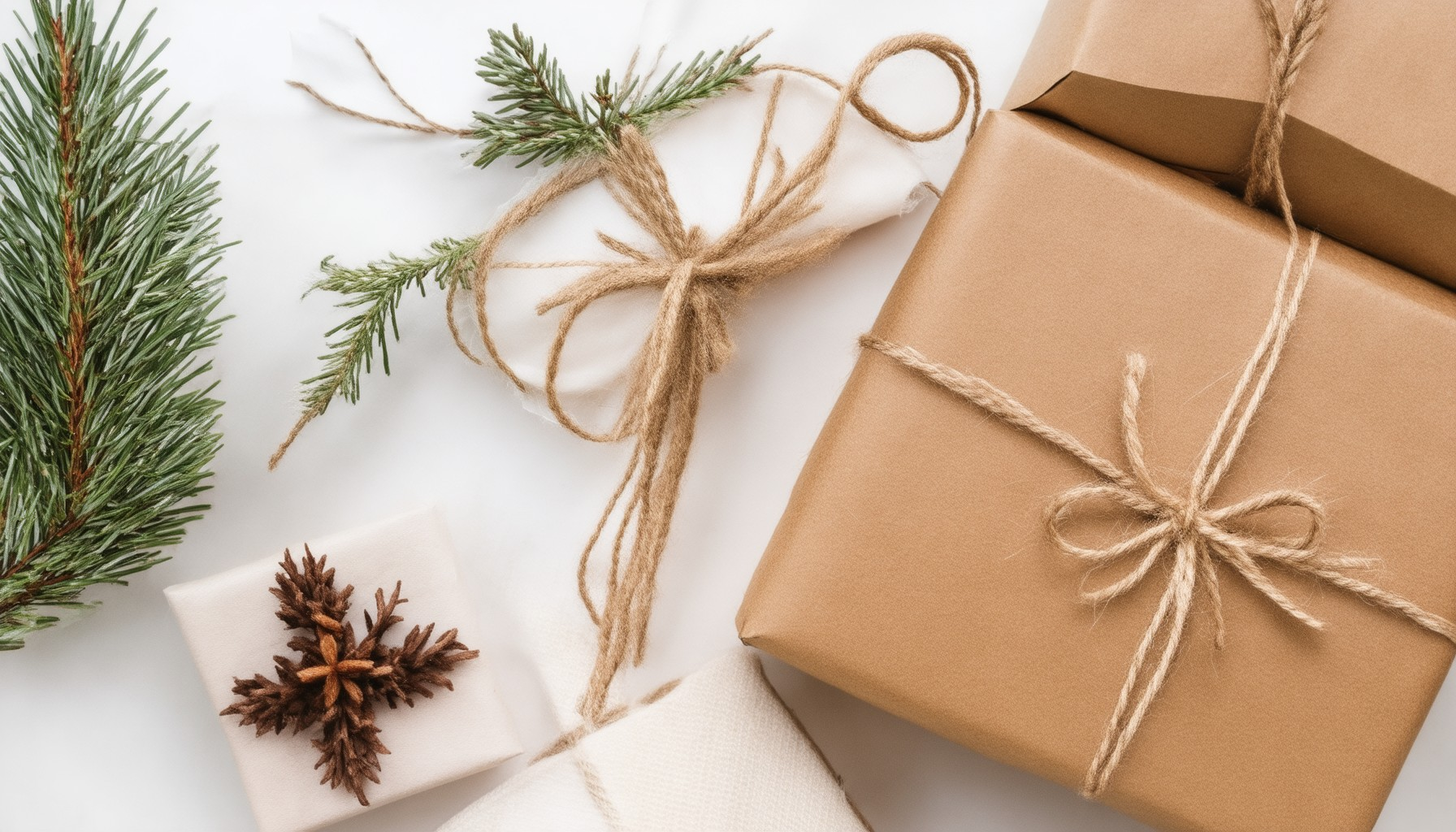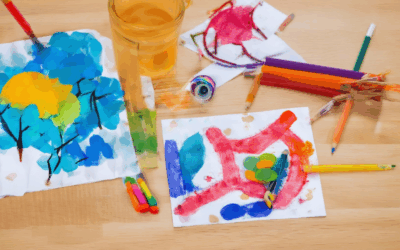As the holiday season approaches, the quest for thoughtful and meaningful gifts becomes increasingly important, but so too does the effort to make these gifts as eco-friendly as possible. Traditional gift wrapping often comes with a hefty environmental cost, from excessive plastic use to single-use materials that end up in landfills. However, there’s a growing movement toward sustainable practices that not only minimize waste but also celebrate creativity and responsibility. Eco-friendly gift wrapping offers a way to transform the way we present gifts, blending style with sustainability. By choosing recycled gift wrapping paper, biodegradable materials, and innovative alternatives to traditional ribbons and bows, we can reduce our environmental footprint while still delivering gifts that feel special and well-thought-out. Whether you’re looking for simple swaps or full-on transformations, this article explores the best eco-friendly gift wrapping ideas to inspire a more sustainable holiday season.
Key Takeaways
– Sustainable Gift Wrapping: Discover eco-friendly alternatives to traditional ribbons and other materials to create visually appealing and environmentally conscious gift wraps.
– Natural Fiber Ribbons: Swap traditional ribbons for durable, biodegradable hemp twine or jute, made from renewable resources.
– Plant-Based Decorations: Enhance gifts with fresh greenery or sustainable artificial flowers, tied with twine for a natural look.
– Paper Ribbons: Craft reusable, recyclable paper ribbons from scrap paper for a cost-effective and eco-friendly option.
– Burlap Sacks: Use burlap sacks, decorated with paint or stamps, for a versatile and reusable gift wrapping solution.
– Fabric Strips: Repurpose fabric scraps into decorative ties or strips, adding a personal and sustainable touch to gift wrapping.
- Alternatives to Ribbon: Explore a variety of materials like fabric strips, twine, yarn, and washi tape to achieve decorative effects without plastic use.
- Creative Decorative Options: Use beads, crystals, or metallic tapes for a shimmering look, or rely on grosgrain or satin fabric strips for texture.
- Rope and String: Opt for sturdy rope or string for heavier-duty tasks, combining functionality with a rustic aesthetic.
- Eco-Friendly Lifestyle: Prioritize sustainable living by reducing waste, conserving energy, and adopting minimalist habits to minimize environmental impact.
- Support Local Businesses: Buy locally-sourced gifts and use reusable items to reduce carbon footprints and support your community.
- Plant-Based Diets: Transition to a vegetarian or vegan diet to lower greenhouse gas emissions and reduce resource usage associated with agriculture.

The Most Eco-Friendly Gift Wrap
When searching for the most eco-friendly gift wrap, consider options that minimize environmental impact:
- Recycled Materials: Look for gift wraps made from recycled paper or sustainable materials like bamboo or cotton. These options reduce waste and support responsible resource use.
- Biodegradable Options: Choose biodegradable wraps that break down quickly, reducing landfill waste. Many brands offer plant-based or mushroom-based wraps.
- Zero-Waste Wraps: Some companies offer zero-waste alternatives that eliminate excess material, making gift wrapping more efficient and sustainable.
- Sustainable Brands: Explore eco-conscious brands like Paper Mache , Ecoskrew , and Bee’s Wrap for high-quality, sustainable gift wrap solutions.
Alternative Gift Wrapping Ideas
Traditional gift wrap isn’t the only way to present a thoughtful gift. Here are several creative alternatives:
- Reusable Items: Cloth napkins, tea towels, or fabric bags can be wrapped around gifts and reused afterward. These options are eco-friendly and practical.
- Fabric Bags: Create a drawstring bag using fabric scraps or purchase reusable ones. These bags can be customized with different patterns or colors to match the gift.
- Burlap Sacks: Use burlap fabric to make gift sacks. These are sturdy, sustainable, and can be decorated with ribbons or bows for a rustic look.
- Jewelry Organizers: Make a fabric or paper jewelry organizer to hold rings, earrings, or other small items. These can be packaged neatly and tied with a bow.
- Personalized Boxes: Use small boxes or envelopes and personalize them with a custom design or message. These can be reused for future gifts.
- Tote Bags: Repurpose fabric or recycled material into tote bags. These are perfect for holding larger gifts and can be styled with ribbons or badges.
- Gift Baskets: Put together a basket or hamper filled with items tailored to the recipient’s interests. Use woven materials or fabric liners to keep everything organized.

How to Wrap Presents Without Waste
Wrapping presents thoughtfully doesn’t have to mean using traditional paper. Here are some eco-friendly and practical ways to wrap your gifts:
- Use Newspaper or Brown Paper: Repurpose old newspapers or brown paper bags for wrapping. These are not only free but also recyclable after use.
- Fabric Wraps: Opt for fabric gift wraps available in various patterns and colors. They are durable, washable, and can be reused for future gifts.
- Cardboard Boxes or Gift Bags: Utilize repurposed cardboard boxes or reusable gift bags. These can be decorated with ribbons or bows and reused annually.
- Sustainable Cellophane: Choose cellophane made from renewable resources for a plastic-free wrapping option. While slightly more expensive, it reduces environmental impact.
- Cloth Gift Wrap Sets: Consider cloth gift wrap sets that come in vibrant patterns and colors. These can be washed and reused, making them a sustainable choice.
To make your wrapping efforts more efficient, try the following tips:
- Fold wrapping materials neatly to minimize waste.
- Choose gift boxes or wraps that perfectly fit the item to reduce excess material.
- Recycle or repurpose leftover bits of wrapping paper or fabric.
By using these methods, you can enjoy wrapping presents while being mindful of environmental impact and resource conservation.

What is an eco-friendly alternative to ribbons?
Eco-friendly alternatives to ribbons offer a sustainable way to wrap gifts while minimizing environmental impact. Here are several options:
- Natural Fiber Ribbons: Hemp twine and jute are excellent substitutes. Hemp twine is durable, biodegradable, and made from renewable resources. Jute, another natural fiber, is also compostable and renewable.
- Plant-Based Decorations: Fresh greenery like ivy, mistletoe, or pine can be used to wrap gifts. These can be tied with twine or left as-is for a natural look. Artificial flowers made from sustainable materials can also be a decorative alternative.
- Paper Ribbons: Create your own paper ribbon from scrap paper or newspaper. These can be cut into strips and tied around gifts. While they may not hold as securely as traditional ribbons, they are fully recyclable.
- Burlap Sacks: Use burlap sacks or cloth bags to wrap gifts. These can be decorated with paint or stamps and reused for other purposes, making them a versatile and eco-friendly option.
- Fabric Strips: Repurpose fabric scraps or old clothing into ties or decorative strips. These can be dyed or left natural for a rustic look, and they add a personal touch to gift wrapping.
These alternatives reduce plastic waste and offer creative ways to enhance gift presentation while staying environmentally conscious.
Alternatives to Ribbon
Ribbons are a versatile tool with numerous uses, but they may not always be the only option. Here are several alternatives that can serve similar purposes:
- Fabric Strips: These can be used for decoration, gift wrapping, or crafting. Available in various colors and patterns.
- Twine: A strong, flexible material ideal for tying, binding, or creating decorative accents.
- Yarn: Can be used for crafting, tying knots, or adding texture to projects.
- Hair Ties and Clips: Perfect for hair accessories or securing loose strands.
- Paper Ribbons/Bows: Made from scrap paper, these are eco-friendly and can be customized.
- Grosgrain or Satin Fabric Strips: Textured fabrics that can mimic the look and feel of ribbon.
- Rope or String: Ideal for heavier-duty tasks, though less sleek than ribbon.
- Beads or Crystals: Can be strung together to create decorative accents.
- Metallic Tapes or Trims: Provide a shiny, ribbon-like finish for formal occasions.
- Washi Tape: A decorative and functional alternative often used in crafting.

The Most Eco-Friendly Thing You Can Do
Choosing the most eco-friendly option involves making mindful decisions that minimize harm to the environment while maximizing benefits. Here’s a structured approach to help you make informed choices:
- Reduce Waste: Opt for products made from sustainable materials like bamboo, recycled plastic, or organic cotton. Use reusable items such as cloth bags, water bottles, and containers to cut down on single-use plastics.
- Conserve Energy: Choose appliances and technologies with high energy efficiency ratings. Switch to renewable energy sources like solar power or wind energy to reduce your carbon footprint.
- Sustainable Living: Adopt a minimalist lifestyle to reduce consumption. Repair rather than replace broken items and participate in zero-waste programs to minimize landfill contributions.
- Support Local Communities: Purchase goods and services from local businesses to keep money in your area and reduce transportation emissions associated with imports.
- Plant-Based Diet: Transitioning to a vegetarian or vegan diet can significantly reduce greenhouse gas emissions and resource usage associated with livestock farming.
By integrating these practices into your daily life, you can create a more sustainable and eco-friendly routine. Remember to stay informed about the environmental impact of your choices and seek out further resources to learn more about sustainable living.
Explore our sustainable living guide for practical tips and projects to make your lifestyle more environmentally friendly. Together, we can work towards a greener future!





0 Comments